Key Takeaways
- Assisted living provides personalized support while maintaining your independence.
- Preparing emotionally and practically makes your transition smoother.
- Most people adjust to their new community within the first few weeks.
- Families play an important role in supporting the transition process.
- Your new home offers opportunities for meaningful connections and activities.
Who Qualifies for Assisted Living and How to Transition Smoothly
Making the move to assisted living marks a new chapter in your life journey. You might feel a mix of emotions—excitement about new possibilities, concern about changes, or uncertainty about what lies ahead. Understanding who qualifies for assisted living can help clarify whether this supportive option is right for you or your loved one.
Transitioning to assisted living involves thoughtful preparation, understanding your care options, and embracing the supportive community that will become your new home. When you know what to expect, you can approach this change with confidence and look forward to the enriching experiences waiting for you. Learning about tips for a smooth transition can make all the difference in your adjustment process.
Understanding the Move to Senior Living
What Assisted Living Means for You
Assisted living creates a supportive environment where you receive help with daily activities while keeping your independence. You’ll have your own private space that feels like home, with access to personalized care services when you need them. This type of senior care focuses on your individual needs and preferences.
Your care team will work with you to understand what support you want and when you want it. Whether you need help with medication management, meal preparation, or personal care, the support adapts to your schedule and comfort level.
24/7 Support for Seniors: What’s Available
Round-the-clock support means trained staff members are always available to help you. This includes emergency response systems in your room, regular wellness checks, and assistance with any unexpected needs that arise.
Your support team includes care coordinators, nursing staff, and personal care assistants who understand your routine and preferences. They’re there to provide peace of mind for both you and your family members.
Preparing for Your Transition
Choosing the Right Senior Living Community
Look for a community that matches your lifestyle and values. Visit different locations, talk with current residents, and observe the atmosphere during meals and activities. Consider the location’s proximity to family, healthcare providers, and familiar places that matter to you. Ask about the community’s approach to care, their activities program, and how they support residents with varying needs.
Understanding Costs and Financial Planning
Assisted living costs vary based on your location, room size, and level of care needed. Most communities offer different pricing tiers depending on the services you choose. Work with the community’s financial counselor to understand all costs upfront. They can help you explore payment options, insurance benefits, and any available assistance programs.
What Personal Items to Bring Along
Bring items that make you feel comfortable and at home. This includes favorite furniture pieces, personal photos, books, and meaningful decorations that reflect your personality. Consider practical items like comfortable clothing, personal care products, and any special equipment you use regularly.
Managing the Emotional Side of Moving
Feeling nervous about this change is completely normal and understandable. Talk with family members, friends, or counselors about your concerns and expectations. Focus on the positive aspects of your move—new friendships, engaging activities, and freedom from home maintenance responsibilities. Remember that you’re joining a community designed to support your well-being and happiness.
Your First Days and Weeks
How Long Does It Take to Adjust to Assisted Living?
Most people take about two to six weeks to feel settled in their new community. Your adjustment period depends on your personality, previous living situation, and how actively you participate in community life. Give yourself permission to take this transition at your own pace. Some days will feel easier than others, and that’s perfectly normal during any major life change.
Meeting Your Neighbors and Care Team
Your care team will introduce themselves during your first few days and explain how they’ll support you. They want to learn about your preferences, routines, and any specific needs you have.
Take time to meet other residents during meals, activities, or common area gatherings. Many communities organize welcome events or pair new residents with established community members who can show them around. Research shows that social interactions increase happiness and well-being.
Getting Involved in Activities and Social Programs
Participating in activities helps you meet people who share your interests and passions. Start with one or two programs that appeal to you rather than overwhelming yourself with too many commitments. Explore community events to discover what activities might interest you.
Communities typically offer a range of options, including fitness classes, hobby groups, educational programs, and social gatherings. Try different activities to discover new interests and connect with fellow residents.
Establishing Your Daily Routine
Creating a daily routine helps you feel more settled and comfortable. Work with your care team to establish meal times, medication schedules, and activity participation that work for your lifestyle. Your routine can be as structured or flexible as you prefer. The beauty of assisted living is having support available while maintaining control over how you spend your time.

Support for Family Members
How Families Can Help During the Move
Family members can assist by helping you sort through belongings, coordinating the physical move, and providing emotional support throughout the process. Encourage your family to visit the community beforehand so they understand your new environment. This helps them feel more comfortable with your decision and allows them to support you more effectively.
Technology makes staying connected easier than ever. Many communities offer video calling capabilities, helping residents learn to use tablets or smartphones for regular family communication. Understanding the signs your loved one needs assisted living can help families recognize when this transition becomes necessary.
Making the Most of Your New Home
Building new friendships often happens naturally through shared meals, activities, and daily interactions, creating meaningful connections based on mutual support and shared experiences. Staying active and engaged in community life—whether by joining committees, volunteering, or participating in group activities—enhances your well-being through physical, mental, and social stimulation.
Meanwhile, your private living space remains your personal sanctuary, reflecting your personality and offering a place to relax, while your care team supports your independence by respecting your choices and preferences.
Taking Your Next Steps Forward
Embracing this new chapter opens doors to experiences you might not have considered before. At Valley View Senior Living, we understand that transitioning to a new home represents a significant change in your life. Our compassionate team is here to support you every step of the way, helping you feel comfortable, connected, and at home from day one.
We’d love to show you around our community and answer any questions you might have about what life here could look like for you. Contact us today to schedule a personal tour and see firsthand how we can support your next chapter.


